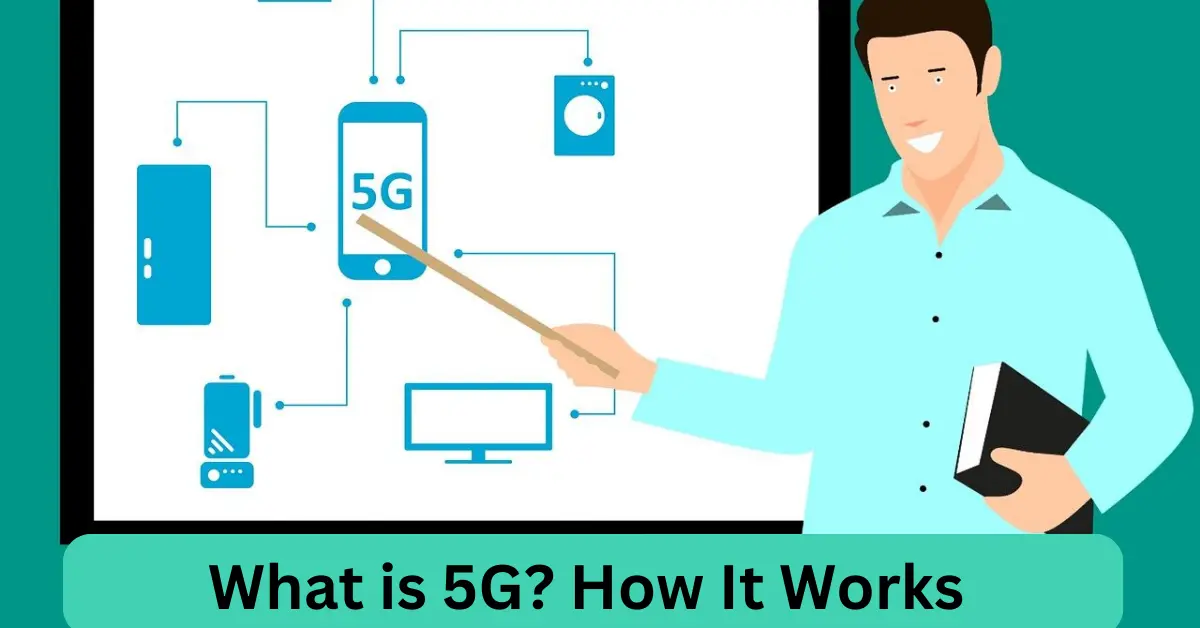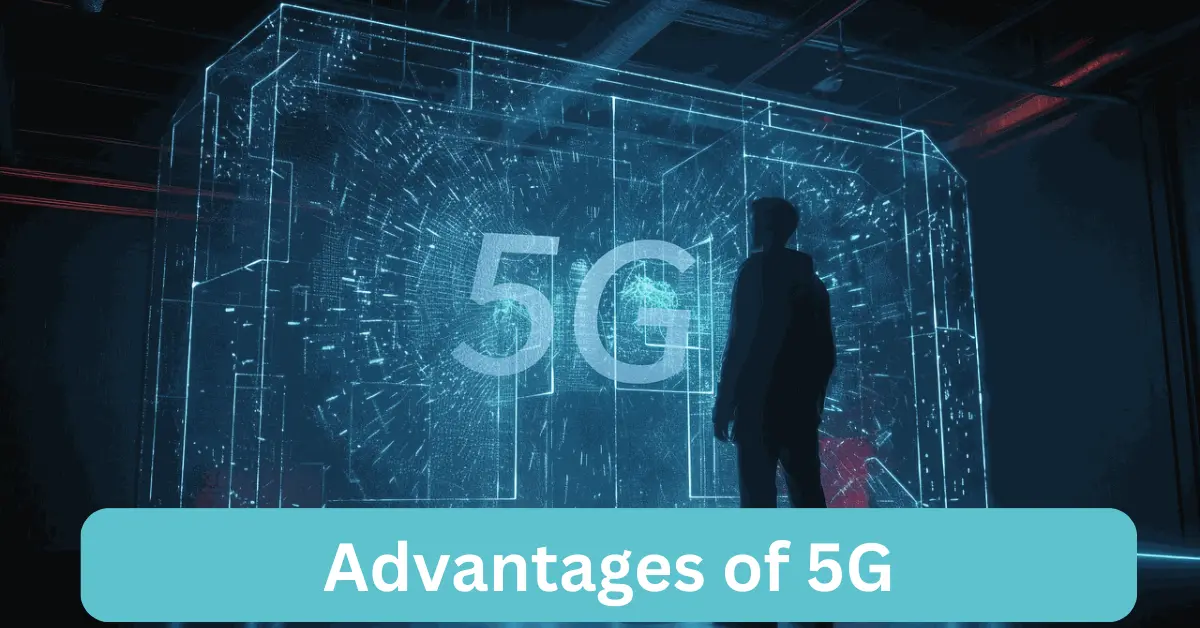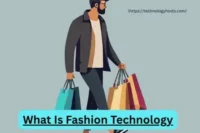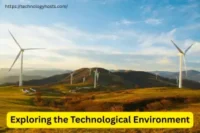What is 5G? How It Works and Why It’s a Game-Changer
Published: 12 Dec 2024
The world of technology is rapidly evolving, and one of the most exciting developments in recent years is 5G – the fifth generation of cellular technology. 5G promises to revolutionize how we connect to the internet, communicate, and interact with the world around us.
In this article, we’ll explore what 5G is, how it works, its key benefits, and its potential to shape the future.What is 5G? How It Works

What is 5G?
5G is the latest generation of wireless cellular technology, following 4G. It is designed to deliver faster speeds, lower latency, and more reliable connections compared to its predecessors. 5G technology operates in a different way than older generations, offering a much higher capacity for data transmission.
Key Features of 5G:
Speed: 5G offers speeds up to 100 times faster than 4G, which means faster downloads, smoother streaming, and quicker response times for online applications. Discover 5G Technology
Latency: 5G significantly reduces latency, which refers to the delay between sending and receiving data. This is essential for real-time applications like gaming, augmented reality (AR), and autonomous vehicles.
Connectivity: 5G can connect more devices at once, which is crucial for the Internet of Things (IoT). This means smarter cities, homes, and businesses. 5g technology
How Does 5G Work?
At its core, 5G technology works by using a combination of new frequencies and network architecture. Here’s a breakdown of the key components that make 5G possible:
Higher Frequencies (Millimeter Waves): 5G utilizes millimeter waves, which are higher frequency radio signals than those used in 4G. These waves can carry more data but have a shorter range. To overcome this, 5G uses a network of small cells – small, low-powered antennas that can be placed closer together to provide coverage .what is information technology
Small Cells and MIMO: 5G relies heavily on small cells – compact base stations that are often installed on streetlights, buildings, or other infrastructure. Additionally, MIMO (Multiple Input, Multiple Output) technology is used, which allows multiple antennas to send and receive more data at once, improving speed and reliability.
Network Slicing: One of the key innovations of 5G is network slicing. This technology allows operators to create virtual networks that are tailored to specific needs. For example, one slice could be optimized for ultra-low latency in healthcare, while another could support massive IoT connectivity.
Edge Computing: With edge computing, data processing is done closer to where the data is generated (such as on a local server or device), What is 5G? How It Works reducing the time it takes to send information back and forth to distant data centers. This is crucial for reducing latency in real-time applications.
Advantages of 5G

Advantages of 5G: Key Benefits
- Lightning-Fast Speeds
5G offers speeds up to 100 times faster than 4G, allowing for instant downloads, smooth 4K streaming, and lag-free online gaming. Large files that would take minutes on 4G can be downloaded in seconds.
- Ultra-Low Latency
5G reduces latency to as low as 1 millisecond, enabling real-time communication for remote surgeries, self-driving cars, and immersive gaming without delays. 5 Uses of Information Technology
- Massive Connectivity
5G supports up to 1 million devices per square kilometer, making it ideal for smart cities, IoT applications, and connected homes. It will enhance the efficiency of devices like wearables and health devices.
- Improved Mobile Broadband
Users will experience consistent and reliable mobile broadband, even in crowded areas. Public Wi-Fi and remote areas will benefit from improved connectivity, bridging the digital divide.
- Network Slicing
5G allows network slicing, which customizes services for different sectors (e.g., healthcare, automotive, entertainment), ensuring optimal performance based on specific needs.
- Energy Efficiency
5G is more energy-efficient, reducing power consumption per bit and offering longer battery life for connected devices. It uses smart infrastructure to minimize energy waste.
- Future-Proof Connectivity
5G provides a scalable platform for future technologies like holographic communication, AI systems, and advanced robotics, ensuring future-proof connectivity for emerging innovations.
Challenges in Implementing 5G
While 5G has the potential to change the world, its implementation is not without challenges.
Infrastructure Costs
Rolling out 5G infrastructure is expensive. 5G requires the installation of small cells in cities and even rural areas, which adds to the overall cost. Additionally, 5G’s reliance on millimeter waves means that more base stations need to be built for coverage, as these signals don’t travel as far as lower-frequency waves.
Coverage Issues
While urban areas are beginning to see 5G coverage, rural and remote areas may be left behind due to the high cost of infrastructure and the limited range of millimeter waves. Over time, however, 5G networks should expand to cover more regions. What is 5G? How It Works
Security Concerns
With increased connectivity comes a greater risk of cyber attacks. 5G’s vast network of connected devices and its reliance on software-defined networks raise concerns about data security and privacy. It’s essential that 5G networks have strong security protocols in place to protect against potential vulnerabilities. How to Secure Your IoT Devices
Applications of 5G
5G is not just about faster internet speeds – it’s about enabling entirely new applications across various industries. Here are a few areas where 5G is making a big impact:
Smart Cities
5G will enable cities to become smarter and more efficient. Traffic lights, streetlights, parking meters, and even waste management systems can be connected to the internet and managed in real time using 5G technology. This will lead to better resource management, improved safety, and reduced energy consumption. What is IoT (Internet of Things)
Healthcare
In healthcare, 5G will allow for faster and more reliable remote consultations, surgeries, and medical monitoring. Doctors can use real-time data from wearable devices to monitor patients’ health conditions and make informed decisions. Additionally, augmented reality (AR) could help doctors visualize 3D scans of patients during surgeries.
Autonomous Vehicles
Self-driving cars rely on high-speed data transmission to make split-second decisions. 5G’s low latency and high speed are ideal for supporting the communication needed for autonomous vehicles to navigate safely on the road.
Industry 4.0
Industries will benefit from 5G’s ability to support smart factories, where machines, robots, and sensors are all connected in real-time. This will lead to more efficient production, better predictive maintenance, and overall smarter manufacturing processes.
The Evolution of Cellular Technology: From 1G to 5G
Briefly discuss the journey from 1G (voice calls) to 5G, highlighting key improvements in each generation. This provides context for why 5G is such a significant leap forward.
Add a timeline or visual chart showing milestones in mobile technology.
Real-Life Examples of 5G in Action
Include specific, relatable examples of how 5G is already being used in various industries:
Entertainment: Virtual reality concerts and live sports with 360-degree views.
Retail: Smart shopping experiences with AR mirrors or virtual fitting rooms.
Education: 5G-powered remote classrooms with immersive learning experiences.
Environmental Impact of 5G
Discuss how 5G could reduce energy consumption through smarter grids and efficient resource management in cities.
Mention potential challenges, What is 5G? How It Works like the environmental cost of building infrastructure, and solutions to mitigate these issues. what is cloud computing
Personal Benefits for Users
Explain how 5G will impact day-to-day life for individuals:
Enhanced video calls with crystal-clear quality.
Seamless cloud gaming experiences.
More efficient smart home devices that respond instantly.
5G and Emerging Technologies
Explore how 5G will act as a backbone for technologies like:
Metaverse: Creating persistent, interconnected virtual worlds.
AI and Machine Learning: Faster data processing for AI-driven solutions in healthcare, education, and beyond.
Blockchain: Enabling faster and more secure decentralized networks.
Demystifying Myths About 5G
Address common misconceptions, such as concerns over health risks or misunderstandings about 5G towers.
Back these points with scientific evidence to reassure readers. Cloud Computing Explained
Comparison with 4G
Provide a side-by-side comparison of 4G and 5G in terms of speed, latency, capacity, and reliability.
Use a simple table or infographic for clarity.
Global Rollout Status
Discuss how countries are adopting 5G at different rates.
Highlight leading countries (like South Korea, China, and the US) and how others are catching up.
Economic Opportunities
Detail the potential economic benefits of 5G:
Creation of new jobs in tech, telecommunications, and infrastructure.
Boosting industries like logistics, retail, and tourism through innovative applications.
Consumer-Friendly Tips
Share practical advice for users considering a switch to 5G:
What to look for in 5G-compatible devices.
How to check 5G coverage in their area.
Cost implications of upgrading to 5G plans.
Conclusion
5G is more than just an upgrade in speed—it’s a transformative leap in connectivity that has the potential to reshape every aspect of our lives. By enabling faster communication, lower latency, and massive device interconnectivity, it lays the foundation for groundbreaking innovations in industries such as healthcare, transportation, entertainment, and beyond.
While challenges like infrastructure costs and security concerns remain, the immense possibilities of 5G far outweigh these hurdles. As we stand on the brink of a new digital era, one thing is clear 5G isn’t just the future of technology—it’s the future of how we connect, create, and thrive in an increasingly interconnected world. What is 5G? How It Works
- What does “5G” stand for?
A) 5th Generation
B) 5 GHz
C) 5Giga
D) 5GigaHertz
- What is the primary benefit of 5G over 4G?
A) Higher data speeds
B) More network coverage
C) Lower energy consumption
D) Shorter battery life
- How much faster is 5G compared to 4G in terms of download speed?
A) 10 times faster
B) 100 times faster
C) 1000 times faster
D) 1,000,000 times faster
- What is one of the key features of 5G that will benefit industries like healthcare and manufacturing?
A) Lower latency (faster response time)
B) More phone calls
C) Higher energy usage
D) More battery life
- 5G uses a technology called “millimeter waves.” What is a characteristic of these waves?
A) They travel long distances without any obstacles
B) They have a low frequency
C) They have a higher frequency and shorter range
D) They are not used in communication
- What is one way 5G will improve virtual reality (VR) and augmented reality (AR) experiences?
A) Better picture quality
B) Reduced network lag and smoother interactions
C) More expensive headsets
D) Longer battery life on devices
- What does the term “network slicing” in 5G refer to?
A) A method to divide networks into smaller sections to improve performance
B) Making slices of pizza for mobile users
C) Creating multiple layers of encryption
D) A feature for improving screen display on mobile phones
- What type of devices will 5G be most useful for?
A) Only smartphones
B) Smartphones, cars, medical devices, and smart homes
C) Only laptops
D) Only gaming consoles
- Why might 5G be a game-changer for self-driving cars?
A) It makes the cars faster
B) It allows cars to communicate with each other and traffic systems in real-time
C) It provides better parking spots
D) It increases the battery life of the cars
- When do experts predict 5G networks will be fully available worldwide?
A) 2023-2024
B) 2025-2030
C) 2035-2040
D) 2045-2050
Results:
8-10 Correct Answers: You’re a 5G expert! You clearly understand the technology behind this next-gen network.
5-7 Correct Answers: Great job! You have a solid understanding of 5G and its benefits.
3-4 Correct Answers: You’re getting there! Keep learning, and you’ll be a 5G pro soon.
0-2 Correct Answers: No worries! 5G is a complex topic, but you’re on the right track to learning more.
| What is 5G, and how does it differ from 4G? |
|---|
|
|
| How will 5G impact industries like healthcare, transportation, and manufacturing? |
|---|
|
Healthcare: 5G will allow real-time remote surgeries, telemedicine consultations, and quicker medical data transfer, improving patient care and access to healthcare services. Transportation: Self-driving cars will rely on 5G to communicate with each other and the surrounding infrastructure, reducing accidents and improving traffic flow. Manufacturing: 5G will power smart factories, where robots and machines communicate instantly, improving efficiency, reducing downtime, and enabling predictive maintenance. |
Proudly powered by WordPress






